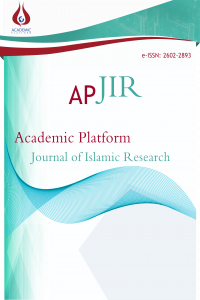Jerusalem from the Perspective of Orientalist Travelers and Critical Studies
Humanity knew the trip as a human act at all stages and in different forms, carrying different
experiences where the daily and the imaginary were mingled by significant signals and colours. From this
point, the trip is generally one of the first expressive forms in which the writing is used in the personal
pronoun I without embarrassment, and shapes that constantly raise the image of the other. Therefore, it
makes the trip open text in all fields and in different forms, either partial or complete with the reconstruction
of Vladimir Kreznski. In addition, it is by nature omnipresent in history, mythology and literature without
forgetting ethnography, it is one of the symbolic and thematic models of the productive literature. Considering that the trip is an open text, it cannot be textured in a box that determines its nature in a
certain way that narrows the liberation of the text from expansion and its spread on other essential fields.According to this thematic I am going to explore the following items:-The open affiliation for the trip-Awareness of the journey text and speechTaking advantage of reading the three streams critics, one of it is the travel literature (spy) as Edward
Said (1978). Moreover, some of it considers the trip or the travel literature as a cultural exchange as Rana
Qabani, and the third stream considers the travel literature as a genre worthy of attention because of the
multiplicity of voices and through it the clearness of nations cultures. I am focusing on my study on the
journeys of John Mandeville, this book tells the story of Mandeville flights in Jerusalem, Egypt, Jordan,
Syria and China, as well as this book provides the reader with further information on the European spirit that
spread with hatred toward Muslims in the middle ages .voiding sweeping generalizations and negative view
of orientalist writings about Jerusalem (El Qods), especially the aesthetic dimension and the Western critique
in travel literature mainly in Serine’s Hot and Catherine’s Sampson studies, by monitoring a middle
approach that can benefit from foreign travel literature study on the East in general and in Jerusalem in
particular.
Jerusalem from the Perspective of Orientalist Travelers and Critical Studies
Humanity knew the trip as a human act at all stages and in different forms, carrying different
experiences where the daily and the imaginary were mingled by significant signals and colours. From this
point, the trip is generally one of the first expressive forms in which the writing is used in the personal
pronoun I without embarrassment, and shapes that constantly raise the image of the other. Therefore, it
makes the trip open text in all fields and in different forms, either partial or complete with the reconstruction
of Vladimir Kreznski. In addition, it is by nature omnipresent in history, mythology and literature without
forgetting ethnography, it is one of the symbolic and thematic models of the productive literature. Considering that the trip is an open text, it cannot be textured in a box that determines its nature in a
certain way that narrows the liberation of the text from expansion and its spread on other essential fields.According to this thematic I am going to explore the following items:
-The open affiliation for the trip
-Awareness of the journey text and speechTaking advantage of reading the three streams critics, one of it is the travel literature (spy) as Edward
Said (1978). Moreover, some of it considers the trip or the travel literature as a cultural exchange as Rana
Qabani, and the third stream considers the travel literature as a genre worthy of attention because of the
multiplicity of voices and through it the clearness of nations cultures. I am focusing on my study on the
journeys of John Mandeville, this book tells the story of Mandeville flights in Jerusalem, Egypt, Jordan,
Syria and China, as well as this book provides the reader with further information on the European spirit that
spread with hatred toward Muslims in the middle ages .voiding sweeping generalizations and negative view
of orientalist writings about Jerusalem (El Qods), especially the aesthetic dimension and the Western critique
in travel literature mainly in Serine’s Hot and Catherine’s Sampson studies, by monitoring a middle
approach that can benefit from foreign travel literature study on the East in general and in Jerusalem in
particular.
___
- Maria Louise Pratt : imperial eyes: travel writing
and transculturation, London and New York,
routledge 1992.
